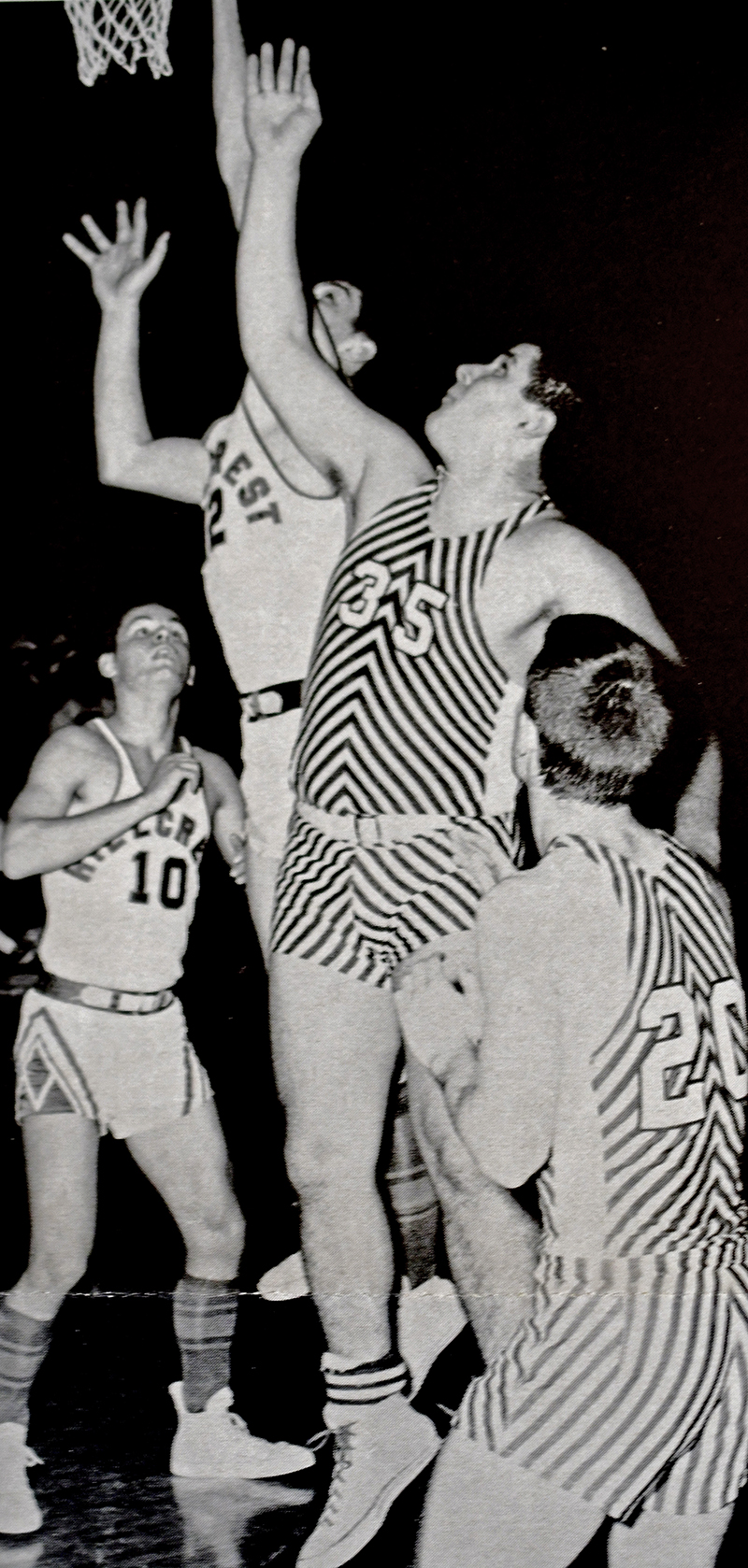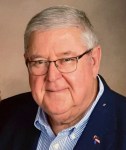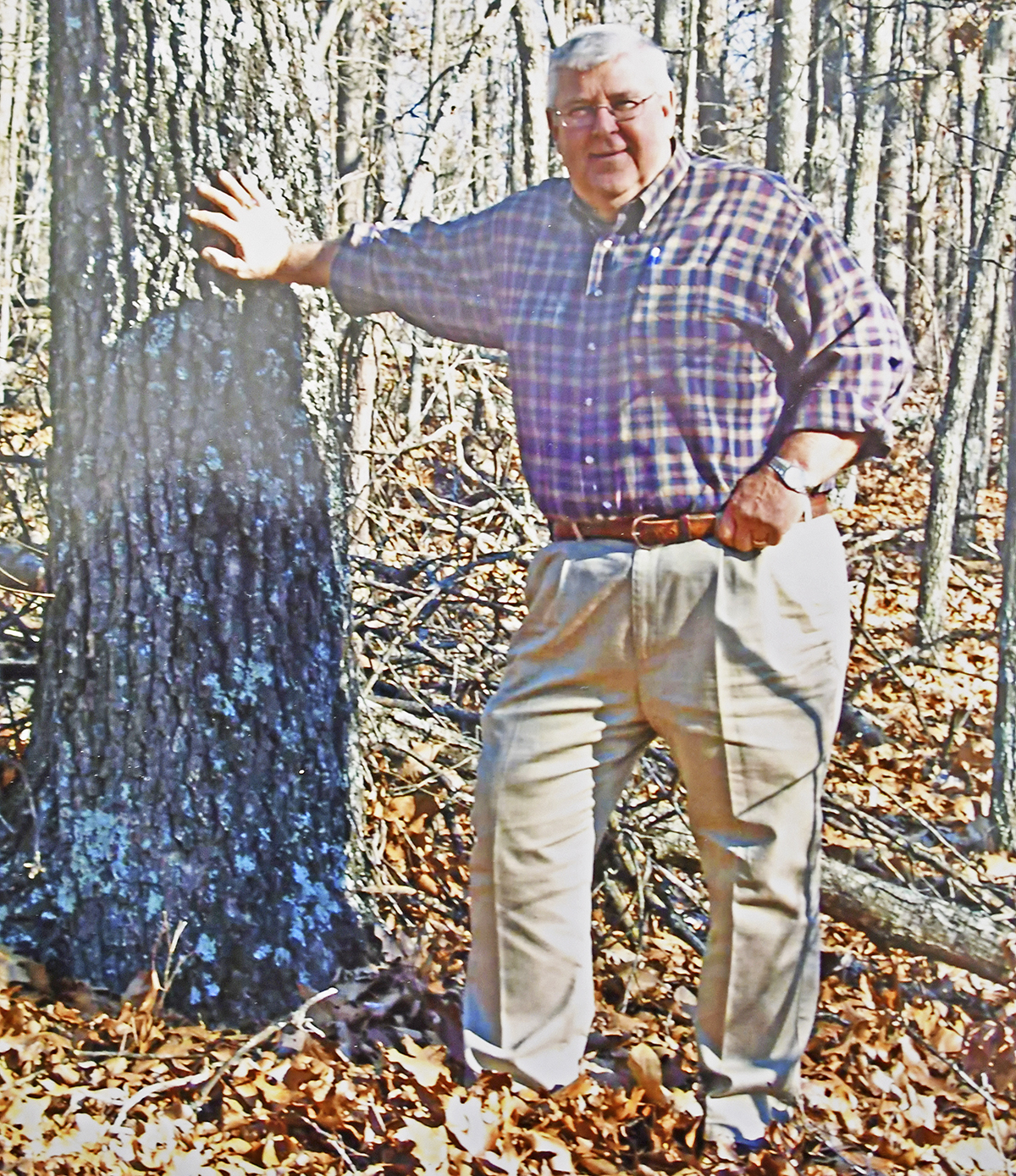There was a lot more to Pat Keohane than met the eye — even though his appearance was extraordinary in scale.
Burly. Husky. Beefy. Those were among adjectives frequently applied to Pat, who died Jan. 21 at age 77. However, they were misleading, or at least incomplete.
True, as center on Springfield’s St. Agnes High School basketball team, not much more than six feet tall but weighing well north of 200 pounds, Pat surprised many opponents with his foot speed, agility and ability to jump.

“The height of his vertical leap was unbelievable for a guy his size,” marvels longtime friend Steve Schneider. Reg Cordry, a Fighting Irish teammate in the early 1960s, agrees that Pat was “a fast runner and could really jump,” but also: “He was such an ox. Once he got ahold of the ball, it was his. Or if you happened to get ahold of it first, you wouldn’t have it for long.”
Pat’s physical size and strength served him well in his stint in the Navy and his job as an orderly in the psychiatric unit of what was then St. John’s (now Mercy) Hospital, then later as a Springfield police officer and a career with the Federal Bureau of Prisons.
However, Pat also had an outsized heart for family, personal friends and professional colleagues.
Coming from a westside Springfield family of 10 kids, Pat with his wife, Ann, built a brood of their own with five children and a half-dozen grandchildren, plus he was a popular uncle to many nieces and nephews.
All enjoyed the “hunting lodge” Pat built on acreage near Cabool after 32 years with the federal prison system that saw him serve as warden at five facilities around the country, winding up in charge of Springfield’s Medical Center for Federal Prisoners from 1996 to 2000.
A special tradition at the lodge was the family Thanksgiving gathering. While Ann supervised cooking inside, Pat and other menfolk worked up appetites outdoors chopping and splitting firewood that would provide heat for the coming winter. “But Pat would carve the turkey,” says Ann. “And he was the one who stuffed it — that was his thing. He’d have all the grandkids stand around and watch him sew it up, to show them how it was done.”
The youngsters also were taught how to safely handle and shoot firearms at the lodge. “We provided the ear protection and the rifles. Pat would make them sit and listen to him go through all the safety rules.”

Pat joined his brothers in hunting deer on the property and in fishing expeditions. But on the many occasions that the so-called hunting lodge served as a rallying spot for Pat’s friends, many of whom had known him since elementary school, “we didn’t do much hunting,” admits Schneider. “We did do some target shooting, but mostly it was just old friends talking about good times and having fun together.”
“We’d play cards, drink beer, eat chili and laugh a lot,” according to John Scholz, who joined the Navy with Pat after high school. Some of the heartiest laughs were prompted by recollections of their two years as active duty sailors.
Following basic training, Pat and Scholz spent a year assigned to a submarine tender based at Charleston, S.C. Then they were transferred to a destroyer escort out of Key West, Fla. However, shortly after arriving in Florida, Pat was recruited to be a deckhand on what was termed “the fleet fishing boat.” (Ann smiles at the term; “Real rough duty,” she chuckles.)
“Pat came to me and told me they wanted him to go,” Scholz recounts. “He asked me if I would be OK with it, because we’d joined up together with the intention of serving together. I told him ‘Sure, go for it.’ Of course, forever after I teased that while I was on a warship defending the nation during the Cuban Missile Crisis, he was on the high seas fishing with the brass.”
After returning to civilian life in Springfield, Pat spent a couple of years as a Springfield police officer. In part because of his rookie status and brawny appearance, Pat was assigned to the foot patrol beat along Campbell Avenue downtown, which at the time was dotted with rough bars. Pat later recalled in a newspaper interview: “Whenever there was trouble, I went in there like a fireball. The bar owners were always complaining to the chief about how I was ruining their business.”
Eventually, like his father, Pat became a corrections officer at the federal medical center here. And again, his imposing size worked in his favor.
As Schneider heard the story: “One day there was a fight or mini-riot in the outdoor courtyard. Pat was the only guard out there. One of the inmates was swinging a piece of pipe. Pat promptly took it away from him, and then stared down a couple of guys who'd had the mistaken impression that they were tougher than him. Then everybody else decided the riot was over.”

‘Pretty soon he had them all enthralled'
Another time that Pat disarmed a potentially hostile situation was witnessed by longtime pal Pat Logue:
“I was moving and had some leftover furniture. I asked Pat if he wanted it for the lodge, and he did. So we loaded up a trailer and hauled the stuff down there. It was a beastly hot day, and after we got the furniture into the lodge, we went into Cabool to get a cold frosty one. We walked into a veterans’ bar and immediately there was total silence. Everybody just stared at us. You could see they were thinking, ‘Oh, a couple of city slickers, daring to cross the threshold of our bar…’
“But Pat went around and started talking to the guys, and pretty soon he had them all enthralled” with military memories, real and imagined. At one point, says Logue, who was born missing one forearm, Pat pointed toward him and told the bar patrons, “My friend over there got his arm shot off in Vietnam!”
“By the time we left,” says Logue, laughing at the memory, “they were buying us beers and offering to come help us if we had any more work to do.”
Others have their own favorite stories of adventures and misadventures. Tom Dornan recalls squeezing Pat into his small Miata sports car after picking him up at the airport in Washington, D.C., where Dornan was working at the time and Pat was visiting to attend a Bureau of Prisons conference. “He was bigger than the car!”
Dornan and several others share recollections of a stunt that Pat repeatedly pulled, dating back to high school: He could unleash an ear-splitting wail that sounded exactly like a police siren, causing motorists for blocks around to pull to the side of the road.
Dornan recalls one time when a real police officer in a small town heard about a carload of young fellows impersonating a police vehicle while passing through on their way to the lake. “The cop pulled us over and told us to give him the siren. We told him we didn’t have one. He said, ‘I know you have one!’ And he looked everywhere for that siren — looked in the trunk, looked under the hood, looked all through the interior. Pat and the rest of us just stood there watching. Finally he gave up and had to let us go.”
Dornan’s wife, Nancy, also was a classmate of Pat’s at St. Agnes. She remembers thinking of him not as a “gentle giant” or “big teddy bear” as some have described him, but rather as “a caring, loving big brother” who, when he sensed someone was in need of protection or advice, “would put his arm around you and give you guidance.”
And, she says, in later life, “Every time you got together with Pat, you felt like you were 16 again. Stories were told, and there was lots of laughing.”
‘I always thought he'd live forever'
Logue was especially impressed by what he described as the “transformation or metamorphosis” he saw take place in Pat over the years. “He became a really excellent professional manager of people. All his staff loved him — you should see all the tributes and awards hanging in the garage at his home. He turned out to be a top-flight manager and administrator.”
Something that didn’t change over time was Pat’s faith. Scholz, noting that Pat and Ann lost two sons, once asked Pat: “How do you remain so even-keeled and get through such tough times? And he said, ‘It’s my religion. And I believe in the power of prayer.’”
Scholz treasures his 70-plus years of friendship with Pat.
“For me, the main thing about Pat was his loyalty. Not many people get to have a lifelong best friend, but that’s what I got with Pat. He called me ‘brother’ and I called him ‘brother.’
“I always thought he’d live forever. I wish he had.”


